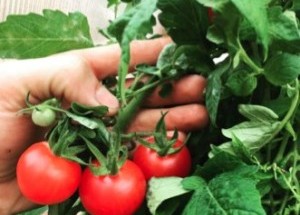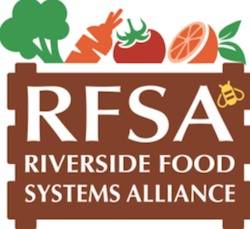Urban Aquaponic Farmer and Chef Redefines Local Food in Orange County, CA
March 7, 2016 | AJ Hughes

Heads of lettuce gain their sustenance through aquaponics channels at Future Foods Farms in Brea. Photo courtesy Barbie Wheatley/Future Foods Farms.
In a county named for its former abundance of orange groves, chef and farmer Adam Navidi is on the forefront of redefining local food and agriculture through his restaurant, farm, and catering business.
Navidi is executive chef of Oceans & Earth restaurant in Yorba Linda, runs Chef Adam Navidi Catering and operates Future Foods Farms in Brea, an organic aquaponic farm that comprises 25 acres and several greenhouses.
Navidi’s road to farming was shaped by one of his mentors, the late legendary chef Jean-Louis Palladin.
“Palladin said chefs would be known for their relationships with farmers,” Navidi says.
He still remembers his teacher’s words, and now as a farmer himself, supplies produce and other ingredients to a variety of clients as well as his restaurant and catering company.
Navidi’s journey toward aquaponics began when he was at the pinnacle of his catering business, serving multi-course meals to discerning diners in Orange County. Their high standards for food matched his own.
“My clients wanted the best produce they could get,” he says. “They didn’t want lettuce that came in a box.”
So after experimenting with growing lettuce in his backyard, he ventured into hydroponics. Later, he learned of aquaponics. Now, aquaponics is one of the primary ways Navidi grows food. As part of this system he raises Tilapia, which is served at his restaurant and by his catering enterprise.
Just like aquaponics helps farmers in cold-weather climes grow their produce year-round, the reverse is true for growers in arid, hot and drought-prone southern California.
“Nobody grows lettuce in the summer when it’s 110 degrees,” Navidi says.
But thanks to aquaponics, Navidi does.
Navidi also puts other growing methods to use at Future Foods Farms. He grows San Marzano tomatoes in a greenhouse bed containing volcanic rock (this premier variety was first grown in volcanic soil near Mount Vesuvius in Italy). Additionally, he utilizes vertical growing methods.
For Navidi, nutrient density is paramount—to this end, he takes a scientific approach in measuring the nutrition content of his produce. In the past, he and his staff used a refractometer, but now rely on a more precise tool—a Raman spectrometer. This instrument uses a laser that interacts with molecules, identifying nutritional value on a molecular level.
With a Raman spectrometer, Navidi measured the sugar content of three tomatoes—one from a grocery store, one from a high-end market, and one that he grew aquaponically. Respectively, measurements read 2.5, 4.0 and 8.5.
Navidi wants his customers to know about these nutritional differences, so he educates his Oceans & Earth diners through its menu and website. Future Foods Farms also offers internship opportunities to students from California State University, Fullerton. Interns conduct research and learn about cutting-edge ways to grow food.
Navidi believes aquaponics and other innovative growing methods can lead to a more robust local food system in Orange County. But he also sees some of southern California’s undervalued resources—namely, common weeds such as dandelion and wild mustard—helping the region become a major local foods player.
“We need more research on nutrients in weeds,” he says. “Dandelions and mustard are power weeds, and need little water.”
While these wild plants are important, they’re no substitute for policy. Navidi would like to see farmers in the county pay lower rates for water, and believes that a revised zoning code is needed for a county that is urban and becoming more so.
“Now, urban farming is happening all over,” he says. “We need changes to our zoning laws—politicians realize that.”
New zoning rules could help others in Orange County venture into aquaponics, something Navidi feels is necessary not only for the county, but for the country.
“For America to be sustainable, it needs aquaponics,” he says.
Ultimately, Navidi’s goal is to provide the best product possible, with an eye toward simplicity, health and wholesomeness.
“Any fine-dining chef is concerned with the quality of their product,” he says. “There’s nothing better than real food. I try to grow the most nutrient-dense tomato possible. Just add sea salt and black pepper—that’s all you need.”
This article originally appeared on Seedstock.com: http://seedstock.com/2016/03/03/urban-aquaponic-farmer-and-chef-redefines-local-food-in-orange-county-ca/












Submit a Comment